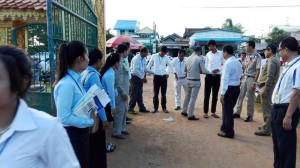
This part (39), the author Mr. Sophan Seng analysed the Education Reform of Cambodia. Beside of his summary of education history of Cambodia, two points are keyly elaborated:
- The displacement of Cambodian workers majorly young people to work in South Korea, Thailand, Malaysia or other countries, have evidently brought with them the two hands and two legs to scavenge soil and dirt in those countries in expected returns of higher compensation than working inside Cambodia. They didn’t bring with them skills or expertise they have accumulated or learnt in Cambodia at all. Or if they have some levels of education, or skills, those host countries didn’t value or accept such credential at all. So we could conclude that Cambodian youths have used only heritage from their parents (body and mind) to earn a living in those countries. Those youths have not been able to use their skills or knowledge from Cambodia schools at all.
- Second point is the foreign direct investment (FDI) in Cambodia. Until today, we see only garment factories being planted and mushroomed in Cambodia. The requirement of education credential or experiences for those garment labors (although completion of diploma or 12 years compulsory education) are not needed. Whenever, those young men and women can use their both hands, they are accepted to work. Their work environment is basic laboring, not skilling or technical utilization. Once, the factories are closed, those workers could not transfer their skills or inscript it into CV for higher position with expected higher wages beside of garment factory at all.
So education system in Cambodia has remained in limbo in producing higher skills and workable human resource in real working environment. But the recent strictness in high school examination is in question that: those passed and failed candidates are retained good quality of education or not?
